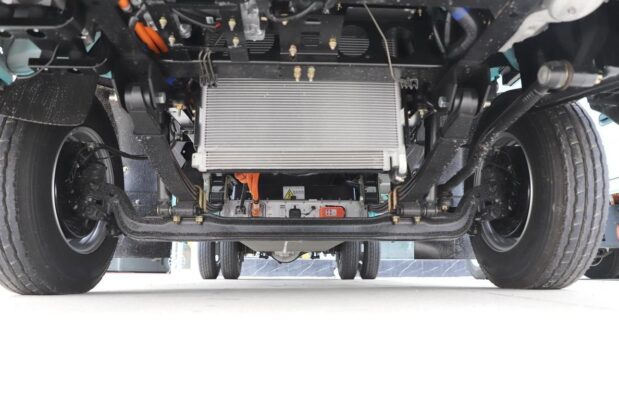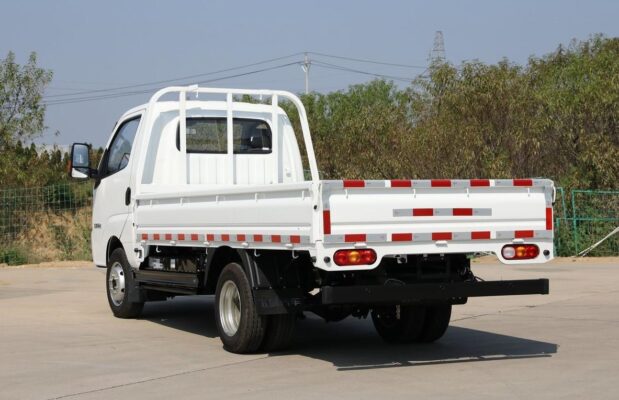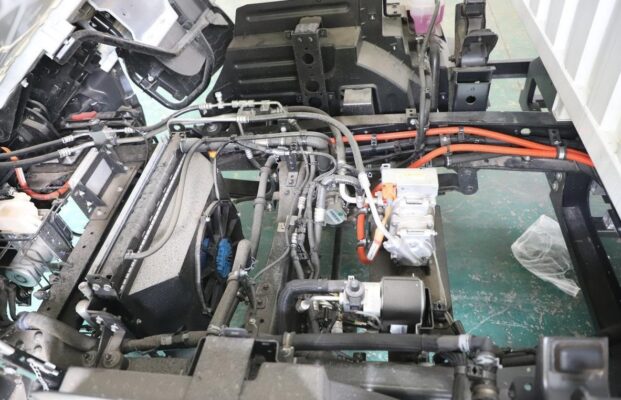Electric Truck Knowledge
Automatic adjustment arm encounters faults? Teach you how to adjust to prevent weak brakes
Posted on by Electric Trucks
Regarding the automatic adjustment arm, we have previously shared some knowledge with you all. However, it seems that many vehicle owners still have a limited understanding of this component. Therefore, we will further elaborate on some aspects of the automatic adjustment arm in several installments.

Many vehicles are equipped with automatic adjustment arms
It’s important to note here that the regulations regarding the mandatory installation of automatic adjustment arms for vehicles do not imply that all operational vehicles must be immediately equipped and implemented. Rather, it means that new production vehicles require manufacturers to install automatic adjustment arms as a standard, otherwise they are not permitted to leave the factory or be registered for sale. Many vehicles are indeed equipped with automatic adjustment arms, but vehicle owners often lack a sufficient understanding of them. Some vehicle owners have encountered issues such as poor matching after using automatic adjustment arms and the associated high costs, which leads them to revert to the traditional choice of manual adjustment arms.
Installation problems
- The axle factory failed to design the appropriate fixed pins for the control arm of the self-adjusting arm in accordance with the technical requirements. As a consequence, due to the incompatibility of this pin during the use of the self-adjusting arm, the connecting sleeve on the self-adjusting arm was prematurely worn out, ultimately resulting in a fault of weak braking for the vehicle.Let’s consider a scenario where a vehicle is constantly subjected to heavy loads and frequent braking. The improper fixed pin could accelerate the wear of the connecting sleeve, reducing the efficiency of the braking system and posing a significant safety risk.
- After the axle factory matched the parameters of the self-adjusting arm and the brake, a sudden change in the material and related parameters of the brake occurred. This led to a large number of vehicles in the user market experiencing the problem of weak braking.For example, if the brake material is changed to a less effective one without adjusting the parameters of the self-adjusting arm accordingly, the braking force generated might not be sufficient to stop the vehicle effectively.
- During the assembly process of the self-adjusting arm by the axle factory, the connecting sleeve of the self-adjusting arm was removed. This resulted in a large rear axle braking clearance for this batch of vehicles during use, causing the problem of weak braking. Simultaneously, it also led to the front axle bearing the braking force of the entire vehicle for an extended period, giving rise to issues such as heating of the front axle brake and abnormal wear of the friction plates.

Maintenance problems
- For a logistics company, six 6X4 branded tractors in operation repeatedly faced faults of heating and locking of the middle and rear axle brakes. After on-site inspection, it was discovered that the main cause was the user’s failure to carry out timely maintenance. This led to rust and jamming between the camshaft, shoe iron, shaft sleeve, and positioning pin, as well as the phenomenon of dragging and grinding between the brake shoe and the brake drum.Imagine a fleet of trucks constantly on the road, with the drivers and maintenance teams overlooking the regular checks and maintenance. Over time, these minor issues accumulate and can lead to major breakdowns and safety hazards.
-
A logistics company in Xiaogan, Hubei Province purchased a batch of heavy-duty trucks. During the 13-month operation, no grease was injected into the internal cavity of the self-adjusting arm. As a result, the grease in the internal cavity dried up, water entered and caused rust, and the function of the self-adjusting arm failed. At the same time, it also caused a series of weak braking problems for this batch of vehicles.
-
For a batch of a certain brand of light trucks, there was a persistent fault of a short service life of the rear axle friction plates in four vehicles during long-term use. After on-site detection, it was confirmed that due to the quality issue of the brake master cylinder used, the rising speed of the rear axle brake pressure was significantly higher than that of the front axle brake pressure. This resulted in severe heating of the rear axle brake and abnormal wear of the friction plates.
Other problems
- In the domestic market, tractors are equipped with automatic self-adjusting arms, while trailers are fitted with manual adjusting arms. Such an assembly leads to faults such as high braking temperature and a short service life of the friction plates of the tractor in actual use.This mismatch in the braking systems of the tractor and trailer can cause imbalances in braking performance, especially during emergency braking situations.
-
In the truck market (particularly for off-road vehicles), the problem of weak braking is frequently encountered. After on-site detection, it was confirmed that there was a poor reset of the push rod in this air chamber. As a result, the self-adjusting arm could not operate normally, causing a large braking clearance and the problem of weak braking for the vehicle.
-
A batch of 8×4 heavy-duty trucks of a certain heavy truck company equipped with self-adjusting arms had a braking temperature issue of 300℃ for the 3rd and 4th axles when traveling 25,000 – 30,000 kilometers. After on-site inspection, it was confirmed that the braking clearance of the 3rd and 4th axles was normal. However, it was found that when the wear amount of the friction plates was 5 – 6мм, the camshaft had basically stood up, resulting in a very slow reset of the brake shoe and the problem of dragging and grinding of the brake. The service station rectified the fault by replacing the rollers with a larger diameter.

To sum up, the proper functioning and maintenance of the automatic adjustment arm are crucial for ensuring the safety and performance of the vehicle‘s braking system. Vehicle owners and maintenance personnel should be vigilant about installation, maintenance, and any potential compatibility issues. Regular inspections and timely maintenance can prevent many of these problems and ensure a smooth and safe driving experience.
For instance, it is recommended that vehicle owners follow the manufacturer’s maintenance schedule strictly. During routine maintenance, technicians should carefully inspect the condition of the automatic adjustment arm, including the wear of the connecting sleeve, the presence of rust or debris, and the functionality of the camshaft and push rod.
In addition, training for maintenance personnel is essential. They need to be familiar with the latest technologies and best practices for maintaining and adjusting the automatic adjustment arm. This includes knowing how to handle different types of faults and being able to identify potential problems before they escalate.
Manufacturers also have a responsibility to provide clear and detailed instructions for installation and maintenance. They should offer technical support and address any design or manufacturing flaws promptly to ensure the reliability of their products.
In the future, as vehicle technology continues to advance, we can expect more intelligent and self-monitoring braking systems. However, until then, it is up to all of us in the automotive industry – from manufacturers to end-users – to ensure that the current systems are properly maintained and operated. After all, a well-functioning braking system is not just a matter of convenience; it is a matter of life and death on the road.